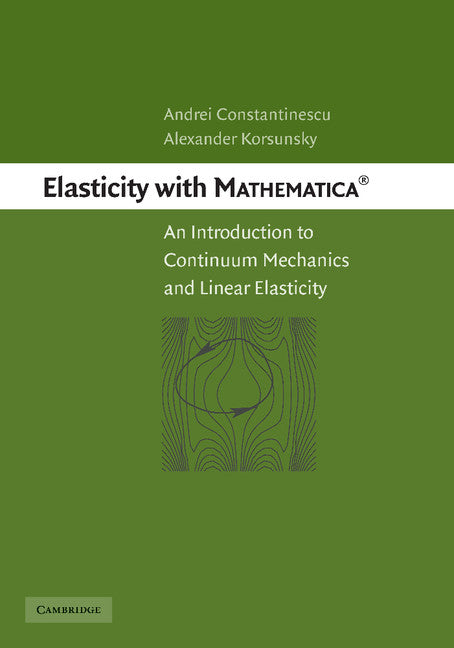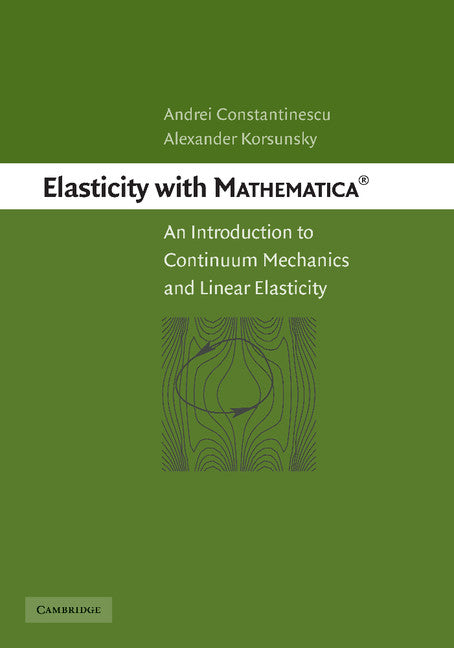Freshly Printed - allow 8 days lead
Couldn't load pickup availability
Elasticity with Mathematica ®
An Introduction to Continuum Mechanics and Linear Elasticity
This book introduces key ideas and principles in the theory of elasticity with symbolic computation.
Andrei Constantinescu (Author), Alexander Korsunsky (Author)
9781107406131, Cambridge University Press
Paperback / softback, published 9 August 2012
266 pages
25.4 x 17.8 x 1.4 cm, 0.47 kg
Review of the hardback: '… a useful book for anybody interested in problems in elasticity … provides a refreshing alternative to throwing every problem into a finite element solver. It would be an excellent textbook for a graduate course in elasticity.' Contemporary Physics
This book introduces key ideas and principles in the theory of elasticity with the help of symbolic computation. Differential and integral operators on vector and tensor fields of displacements, strains and stresses are considered on a consistent and rigorous basis with respect to curvilinear orthogonal coordinate systems. As a consequence, vector and tensor objects can be manipulated readily, and fundamental concepts can be illustrated and problems solved with ease. The method is illustrated using a variety of plane and three-dimensional elastic problems. General theorems, fundamental solutions, displacements and stress potentials are presented and discussed. The Rayleigh-Ritz method for obtaining approximate solutions is introduced for elastostatic and spectral analysis problems. Containing more than 60 exercises and solutions in the form of Mathematica notebooks that accompany every chapter, the reader can learn and master the techniques while applying them to a large range of practical and fundamental problems.
Preface
1. Kinematics: displacements and strains
2. Dynamics and statics: stresses and equilibrium
3. Linear elasticity
4. General principles in problems of elasticity
5. Stress functions
6. Displacement potentials
7. Energy principles and variational formulations
Appendix 1. Differential operators
Appendix 2. Mathematica tricks
Appendix 3. Plotting parametric meshes
Bibliography
Index.
Subject Areas: Mechanics of solids [TGMD], Fluid mechanics [PHDF], Maths for scientists [PDE]


